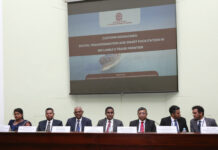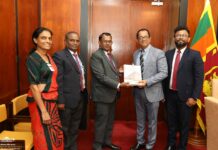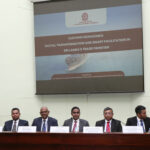By Dr. Poonam Khetrapal Singh, WHO Regional Director for South-East Asia
The WHO South-East Asia Region continues to accelerate action to enhance patient safety and ensure access for all to safe maternal and newborn care – the theme of this year’s World Patient Safety Day.
Globally, every year, an estimated 134 million adverse events due to unsafe care occur in hospitals in low- and middle-income countries, contributing to around 2.6 million deaths. Approximately 810 women die every day from preventable causes related to pregnancy and childbirth, in addition to around 6700 newborns.
An estimated 2 million stillbirths occur annually, over 40% of them during labour. In the Region and across the world, most stillbirths and maternal and newborn deaths could be avoided through the provision of safe and quality care by skilled health professionals working in supportive environments.
The Region has in recent years applied targeted action to enhance patient safety, in line with its Flagship Priority on achieving universal health coverage (UHC) and the Region’s Strategy for Patient Safety 2016–2025, in addition to the recently adopted Global Patient Safety Action Plan 2021–2030.
Most countries of the Region continue to implement a national patient safety or quality strategy. Several countries have in place administrative structures tasked with ensuring health-care quality and safety.
Policy makers, programme managers and facility administrators in all countries of the Region continue to incorporate patient safety into disease-specific and clinical programme areas, including to accelerate reductions in maternal, newborn and child mortality – another of the Region’s Flagship Priorities. Four countries of the Region have achieved the 2030 neonatal mortality rate target of 12 per 1000 live births or lower.
Six countries have achieved the 2030 stillbirth rate target of 12 per 1000 total births. Two are on track to achieve the 2030 maternal mortality rate target.
Amid the COVID-19 response, WHO continues to support Member States of the Region to maintain and strengthen essential health services, including for maternal and newborn care.
In the Region and globally, the pandemic has exposed gaps in patient and health worker safety, highlighting the need for policy makers and facility administrators to strengthen best practices at the point of care to prevent avoidable risks, improve the quality and safety of frontline services, and enhance resource utilization.
Adequate infection prevention and control, access to hand hygiene facilities, adequate water, sanitation and hygiene, strong antimicrobial stewardship, health workers who are trained in and observe safety protocol – these and other interventions are required to increase patient safety and accelerate progress towards full implementation of the Regional and global strategies.
On maternal and newborn care specifically, WHO is calling on stakeholders to increase uptake of evidence-based interventions with point of care quality improvements, particularly during childbirth, with a focus on several priorities.
First, fostering respectful care for safe delivery. Every woman has the right to a positive birth experience and to be treated with dignity and respect by facility staff regardless of background, health, or social status.
Second, ensuring appropriate use of drugs and medical products during childbirth, including blood and injection safety. In all countries of the Region, WHO guidance on intrapartum care, essential newborn care, advanced newborn care, and emergency obstetric and newborn care must be harnessed and applied to maximum effect.
Third, continued commitment to improve quality of care, including through the Region’s Point of Care Quality Improvement Model. All adverse events must be reported, and corrective measures applied.
Fourth, ensuring health workers are well trained and well equipped to provide safe care, for which knowledge-sharing and collaboration are essential, with a focus on strengthening the midwifery cadre and enhancing access to quality emergency obstetric services.
Not a second can be spared. In all countries of the Region, the COVID-19 crisis has increased fiscal challenges, underscoring the need to obtain maximum health system efficiency with allocated funds. On medication errors alone, the world loses an estimated US$ 42 billion annually, excluding lost wages, productivity, or health care costs.
In low- and middle-income countries, unsafe and poor-quality care leads to a US$ 1.4 trillion to 1.6 trillion loss in productivity every year.
Inaction is neither affordable nor sustainable. On World Patient Safety Day, WHO reiterates its commitment to support all countries of the Region to eliminate avoidable harm in health care, to strengthen health service delivery, and to achieve universal health coverage – because all people have a right to safe, dignified and respectful care.
WHO’s South-East Asia Region comprises the following 11 Member States: Bangladesh, Bhutan, Democratic People’s Republic of Korea, India, Indonesia, Maldives, Myanmar, Nepal, Sri Lanka, Thailand and Timor-Leste.












